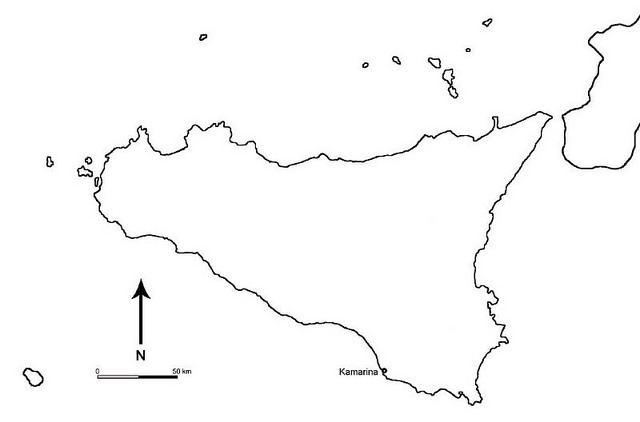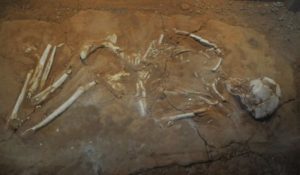
Far from being a modern invention, genuine belief in what we would deem today to be ‘fringe’ or ‘occult’ was commonplace in the ancient world. Although specific attitudes toward paranormal activity differed according to time and geographical place, the ancient Greeks provide an example of a civilization that wholly embraced the supernatural. The writings of ancient authors give us a glimpse into the minds and beliefs of the Greeks, and it is clear that many members of the society thought that the dead could roam the earth. Greeks imagined scenarios in which reanimated corpses rose from their graves, prowled the streets and stalked unsuspecting victims, often to exact retribution denied to them in life. Even those who could not physically leave their tombs posed a threat, because mediums could easily invoke restless spirits and cajole them into committing heinous acts. These ideas were mainstream, and not rooted in folklore or fantasy, because the cultural and religious foundations of the ancient Greeks led them to believe that death was not necessarily a permanent state. Instead, there were special cases in which it could be fluid, blurring the seemingly rigid lines that separate the living from the dead.
Necrophobia, or the fear of the dead, is a concept that has been present in Greek culture from the Neolithic period to the present. At the heart of this phobia is the belief that the dead are able to reanimate and exist in a state that is neither living nor dead, but rather ‘undead.’Scholars sometimes refer to the undead as ‘embodied or solid ghosts’ because they have a solid physical form, but the term most frequently used is ‘revenant’ from the Latin word for ‘returning,’ revenans. Revenants are feared because it is believed that they leave their graves at night for the explicit purpose of harming the living. To prevent them from departing their graves, revenants must be sufficiently ‘killed,’ which is usually achieved by incineration or dismemberment. Alternatively, revenants could be trapped in their graves by being tied, staked, flipped onto their stomachs, buried exceptionally deep or pinned with rocks or other heavy objects. Although rare, the material remains of these necrophobic activities are preserved in the archaeological record, and they present modern archaeologists with the difficult task of their interpretation.
The material remains of necromancy, the purposeful invocation of the dead, are also perceptible in the archaeological record. However, our knowledge of the ephemeral aspects of necromantic ceremonies largely comes from Greek literary sources. Indeed, the oldest extant description of a necromantic ritual is found in Book 11 of Homer’s Odyssey. Odysseus fills a pit with milk, honey, wine, water and barley, then slits the throats of a ram and a ewe, allowing their blood to commingle with the liquids in the pit. He offered these libations to the dead so that they would be compelled to appear to him and provide answers to his questions. The dead were also invoked covertly through the use of curse tablets, which the Greeks called katadesmoi. Katadesmoi are binding spells inscribed on thin sheets of lead, often shaped like tongues or leaves, which were deposited in graves during clandestine nighttime ceremonies. The messages on curse tablets were intended for Underworld deities who, upon receipt, were expected to coerce the souls of the dead into fulfilling the requests of the living. Often, petitioners sought to redress a wrong that had been committed, such as murder or the theft of an inheritance, but katadesmoi were also used so that one might gain an advantage in love or business.
These ancient supernatural beliefs can be better understood through the investigation of the archaeological evidence of necrophobia and necromancy. One unique site, the Greek colony of Kamarina in southeastern Sicily, provides evidence for both practices. Using Kamarina as a case study, our exploration begins with a brief description of the city and its Classical cemetery, followed by details of the pertinent burials and their associated objects, as well as the examination of possible explanations of their peculiarities and the discussion of parallel case studies. When neatly pulled together and packaged, this information will ultimately serve the purpose of placing these macabre customs within the wider framework of Greek mortuary and cultural practices.
________________________________________
Map of Sicily, showing location of Kamarina. Drawing by D. Weiss
____________________________________________________
Kamarina: A Greek Colony in Sicily
Although the ancient Mediterranean region experienced many waves of migration and colonization throughout its history, the period between the 8th and 6th centuries BCE saw a Greek expansion that was, by far, the largest in terms of scale and extent. At the end of the 6th century, Greek colonies and settlements stretched from the Iberian Peninsula to North Africa, Asia Minor and the Black Sea. There were numerous reasons for this unprecedented growth, but those that are cited most frequently are overpopulation, ‘land hunger,’ food shortages, the need for raw materials and the desire for increased trade. Nevertheless, it was during this time that the Greeks began to colonize southern Italy and Sicily, a region they called Magna Graecia. Kamarina, a city strategically positioned for commerce on a juncture between two rivers, was founded on the coast of southeastern Sicily around 598 BCE and remained occupied until the middle of the 1st century CE, when the site was abandoned.
Although it was never resettled, vestiges of the memory of ancient Kamarina were preserved throughout the centuries. In fact, the plateau upon which the ancient city sat was called ‘Camerana,’ enabling 16th century European scholars to conclude that the ruins at this site must have been the remnants of ‘Kamarina.’ This identification was positively confirmed in the late twentieth century by the discovery of lead administrative plates inscribed with the names of Kamarinean citizens. These plates were found near the city’s main sanctuary, which was likely dedicated to Athena. The function of the plates has been a source of scholarly debate since their excavation, and although their precise purpose remains unclear, it is likely that they collectively constituted an official, updated record of citizenship, land ownership, public contributions or military registrations.
________________________________________
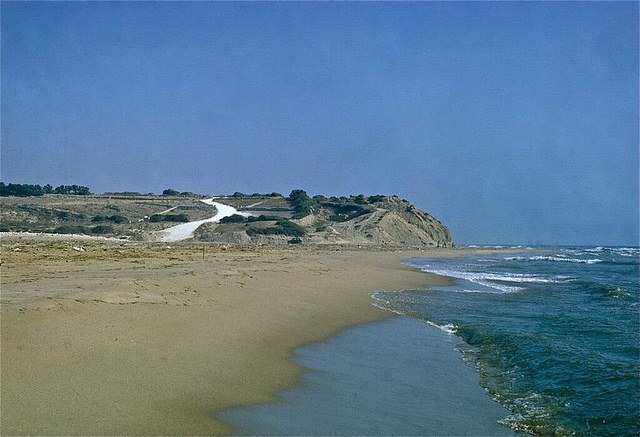 View of the ruins of Kamarina from the beach. Photo courtesy of R.J.A. Wilson
View of the ruins of Kamarina from the beach. Photo courtesy of R.J.A. Wilson
_______________________________________
The city’s Classical necropolis, which archaeologists call Passo Marinaro, was established southeast of Kamarina and was in use from the 5th through 3rd centuries BCE. Although the precise boundaries of the cemetery have yet to be discovered, approximately 2,905 burials have been excavated in the 8,000 square meters explored by archaeologists. Both inhumation (the burial of an intact body) and cremation were practiced at Passo Marinaro. One of the principle excavators, Giovanni Di Stefano, estimates that 85 percent of the burials are inhumations, where the bodies were deposited in either supine (lying flat on their backs) or flexed (lying in their sides with their legs bent) positions. Some of these individuals were found without burial containers, but others were placed in trench graves, coffins made of roof tiles, sarcophagi made of stone or terracotta or underground chamber tombs. The remaining 15% of the burials were cremations that were buried in either pits or pots. More than half of the total burials contained grave goods, which are items that are deposited in the grave with the deceased. Terracotta vases were the most prevalent objects, but some other commonly found goods were metal coins and terracotta figurines.
_______________________________________
Map of Kamarina with a detail of Passo Marinaro necropolis. Drawing by D. Weiss
__________________________________________________
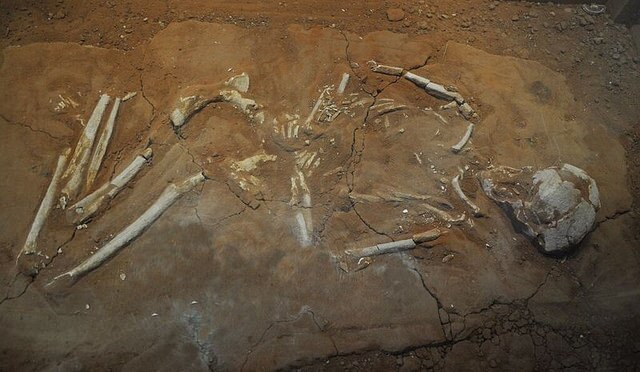 Typical flexed burial from Passo Marinaro. Photo by author, courtesy of the Regional Museum of Kamarina.
Typical flexed burial from Passo Marinaro. Photo by author, courtesy of the Regional Museum of Kamarina.
_____________________________________________________
Fearing the Dead
Two unique burials stand apart from the rest. The first, tomb number 653, contains an adult of indeterminate sex and stature. In life, this person experienced a period of serious malnutrition or illness, as evidenced by distinct horizontal lines of growth arrest that are visible on the teeth. The grave itself is oriented east to west, and although its occupant appears to have been buried without a container, the body is accompanied by two grave goods, an unguentarium and a lekythos. Both objects are vases that typically hold oil and are connected with Greek funerary rituals. What is unusual about Tomb 653 is that the head and feet of the individual are completely covered by large amphora fragments. An amphora is a large, two-handled ceramic vessel that was typically used for storing liquids. The heavy amphora fragments found in Tomb 653 were presumably intended to pin the individual to the grave and prevent it from seeing or rising. The second burial, tomb number 693, contains a child approximately 8 to 13 years old, also of indeterminate sex and stature. No signs of disease are present on the child’s skeletal remains, and there are no traces of either a burial container or grave goods. The grave is orientated north to south, and although this is different from the orientation of Tomb 653, north to south orientations were not uncommon in Passo Marinaro. However, what is uncommon is the placement of five large stones on top of the child’s body. Like the aforementioned amphora fragments, it appears that these stones were used to trap the body in its grave.
__________________________________________
 Reconstruction of a typical tomb from Passo Marinaro. Photo by author, courtesy of the Regional Museum of Kamarina.
Reconstruction of a typical tomb from Passo Marinaro. Photo by author, courtesy of the Regional Museum of Kamarina.
_____________________________________________________
 Drawing of the burial in Tomb 653. Drawing by D. Weiss from G. Di Stefano’s excavation journals.
Drawing of the burial in Tomb 653. Drawing by D. Weiss from G. Di Stefano’s excavation journals.
________________________________________________________
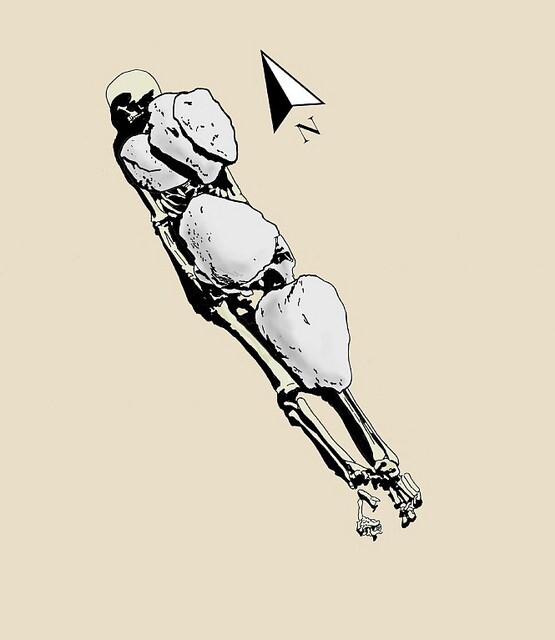 Drawing of the burial in Tomb 693. Drawing by D. Weiss from G. Di Stefano’s excavation journals.
Drawing of the burial in Tomb 693. Drawing by D. Weiss from G. Di Stefano’s excavation journals.
______________________________________________________
The extraordinary burial treatment of these two individuals raises the obvious question of ‘why?’ The research of folklore historian Paul Barber reveals that, regardless of time period or geographical location, preindustrial societies have strikingly similar ways of interpreting the phenomena associated with death and decay. Therefore, it is unsurprising that ethnographic parallels from historic cultures, such as 12th century Western Europe, 19th century New England and early 20th century Greece, reveal a widespread underlying belief that specific events and circumstances are capable of transforming a corpse into a revenant. These factors can be separated into four broad categories: predisposition, predestination, events and nonevents. Certain individuals whose behaviors fall outside of societal norms are predisposed to become revenants. In particular, these are people who are considered to be difficult, unpopular, odd or ‘bad.’ Others are predestined to be revenants and are powerless against their fates. These persons include illegitimate offspring, children who were conceived on a holy day or born on an inauspicious day, and babies born with abnormalities or deformities. Occasionally, birth order is also significant; for example, Romanians traditionally believed that the seventh child is always destined to become a revenant. An unrelated collection of events can likewise transform a corpse into a revenant. Animals and insects must be kept away from the deceased, because if one were to leap or fly over it, the body would become a revenant. Humans must also be wary, for reaching over a corpse could have the same undesired effect. Suicides, mothers who died in childbirth and victims of murder, drowning, stroke, plague and curses are all likely candidates for revenants and are usually disposed of in a manner that is different from the other non-afflicted members of the community. Finally, nonevents, or things that are left undone, can compel a person to return from the dead. Corpses must be buried, and when they are not, they become revenants. Individuals who do not receive proper burial rites or are not buried deep enough, fall into this category as well. Presumably, the logic behind this belief is that a person who is neglected in death will reappear in order to harm the living. Other people, such as those who have died too young or mothers whose children are left uncared for, will also return from the grave.
Tertullian, a Christian author living in the Roman province of Africa (ca. 2nd to 3rd centuries CE), tells us that the ancient Greeks adhered to similar convictions. Under normal conditions, the soul would leave its body after death and journey to Hades, the Greek Underworld, where it would spend eternity. It was believed, however, that a very small subset of the spiritual population could not transition to the Underworld in the regular fashion. These earthbound souls were ‘special’ dead who were angry with the living and capable of causing them harm. Grouped into three categories, the special dead consisted of the aoroi, who had died prematurely or before marriage; the biaiothanatoi, who had met violent deaths in various ways (including soldiers who died in battle or persons who committed suicide); and the ataphoi, who had not received proper funerary rites or were left unburied. These categories were not mutually exclusive, as individuals could have been killed violently and left unburied. Nevertheless, extant supernatural tales tend to describe the special dead as ghosts without solid body or form. There are, however, some notable exceptions where it seems that the apparition is in fact a revenant. For example, Roman authors Pausanias and Strabo both tell the story of the Hero of Temesa. A tempestuous storm forced Odysseus and his crew to seek shelter on the island of Temesa. One of his sailors got drunk and raped an island girl. Native justice prevailed when the locals stoned the offending sailor to death. Odysseus, seemingly indifferent, sailed off without the body of his shipmate. Back on the island, the murdered sailor could not rest in peace. One-by-one he began to kill the inhabitants of Temesa, until the Pythia, Apollo’s prophetic priestess at Delphi, ordered the islanders to propitiate the dead man by dedicating a sanctuary to him and offering him a yearly human sacrifice of the most beautiful maiden in Temesa. They did as they were commanded and the killings stopped. One year, the famed boxer Euthymus came to the island around the time of the propitiation ceremony. He fell in love with the chosen sacrificial maiden, so he fought the dead sailor and bested him, driving the monster from the island and into the sea.
Although necrophobia seems to be rooted in superstition and folklore, Paul Barber argues that there is a scientific basis for some of the occurring phenomena. Oral and written accounts from different cultures often describe revenants as having either ruddy or dark complexions, swollen and bloated bodies, flexible limbs without a trace of rigor mortis, an ‘evil’ smell, open eyes and mouths and blood around the lips, nose, eyes or ears. The traditional vampire, a special class of blood-sucking revenant, also displayed these traits. Although Nosferatu, Dracula and the characters of the Twilight saga have conditioned us to picture vampires as pale and wan, it is likely that the vampire legend arose to explain the appearance of bodies that were flushed and bloody, presumably from nocturnal feastings on members of the community. Furthermore, all revenants also seem uncannily ‘alive’ as they tend to have warm skin, fingernails and hair that continue to grow, and are often found in positions markedly different from those in which they were buried.
Far from exceptional, all of these traits are normal byproducts of decomposition. As a body decays, it swells and becomes discolored, and a blood-stained fluid seeps from the mouth and nostrils. Further bloating and distention is caused by microorganisms in the abdomen that expel gases as they digest tissue. This process generates a foul odor and heat, causing the skin of the corpse to feel warm. Contrary to popular belief, rigor mortis is temporary. It sets in a few hours after death and dissipates within 10 to 48 hours. Thus, flexible limbs and open eyes and mouths are simply the result of relaxed muscles. Another misconception is that blood coagulates indefinitely upon death. This is true in most cases, but in instances when death is sudden and the flow of oxygen is abruptly cut-off, blood begins to clot initially, but quickly returns to a liquid state. If internal gases cause the thoracic and abdominal cavities to burst open, as they are apt to do, seemingly fresh blood spills into the burial container, again reinforcing the vampire myth. Finally, the movement and release of gases can cause the body to change position, while shrinkage of the skin gives the appearance of hair and nail growth.
Although there are no known parallels in Sicily for the Kamarinean examples, bioarchaeologist Anastasia Tsaliki maintains that burials of suspected revenants have been discovered throughout the ancient Greek world. The earliest examples are from Cyprus and date to the Neolithic period (ca. 4500–3900/3800 BCE). At Khirokitia, flexed bodies buried in pit graves were pinned by millstones that were placed on either their heads or chests. A similar burial was found in a Middle Helladic (ca. 1900–1600 BCE) deposit from the Argolid. The individual was flexed, placed in a stone-built cist tomb and restrained with a large rock. Three additional examples date to much later periods. At the site of Merenda in Attica, an abandoned limekiln served as a gravesite for two dismembered individuals. The first body belonged to a woman who was cut in half, with both halves placed parallel to one another in the prone position. The arrangement of her bones reveals that she was cut before she had fully decomposed, but it is unclear whether this happened around the time of her death, or at some point shortly thereafter. Buried with her was a small trefoil Roman jar containing a single coin from the reign of Emperor Constantine (ca. 307–337 CE) and a portion of the dismembered left leg of an adult male. After deposition, the skeletons were deliberately sealed in the limekiln by large rocks. At Mytilene on the island of Lesbos, a Turkish cemetery from the Ottoman period (18th to 19th centuries CE) contained an isolated tomb of an adult who was pinned at the neck, pelvis and both feet with 20 cm nails. Finally, another burial from Lesbos dating to the same period contained a man over the age of 60. He was found in a cist grave and had three bent 16 cm spikes mixed in with his bones. Although their original locations are uncertain, it is presumed that these spikes had been driven into the corpse. The man had a number of pathological conditions and deformities that could provide an explanation for his abnormal burial treatment. His frontal sinuses were seriously infected, to the point where the upper margins of his eye orbits were deformed. His nose, upper and lower jaws were also deformed, presumably caused by facial paralysis due to neurological problems with the facial and trigeminal nerves. In addition to these, he also had a healed wound on his forehead that was likely caused by a knife or other sharp instrument, suggesting that he was involved in at least one incident of interpersonal violence. Thus, the skeletal remains reveal that this individual was not only deformed, but also had come into conflict with members of his community during his lifetime. These observations, coupled with his unique burial treatment and its similarity to other confirmed instances of revenant burials, suggest that this man was also treated as a potential revenant when he was laid to rest.
Often, it is not possible to determine the reasons why a person was buried in a deviant fashion because ephemeral traits, such as personality or birth order, are not preserved in the archaeological record. However, as with the man from Lesbos, information gleaned from the analysis of skeletal material can provide important clues. For example, anthropologist Paul Sledzik and archaeologist Nicholas Bellantoni discovered a skeleton of a 50- to 55-year-old man from mid-19th century Connecticut with his head and femurs placed in a skull-and-crossbone pattern. This unique positioning indicates that the man was exhumed and his bones were rearranged after his flesh had decomposed. Presumably, the man was believed to be a revenant, and since his body could not be staked, burned or dismembered, his bones were arranged instead in a manner that was symbolic, significant and powerful. Skeletal analysis revealed that the man had lesions on his ribs that were consistent with a chronic pulmonary infection, such as tuberculosis. Tuberculosis is closely linked to vampirism, primarily because its victims expel blood-spotted sputum while coughing and slowly waste away as their weight and appetites decline. It is also a highly contagious disease. The connection between purported revenants and infectious disease is strong, considering revenants are believed to attack close friends and relatives, the very persons who are at highest risk for contracting the illness that killed the supposed revenant. Contemporary accounts from 18th and 19th century New England contain approximately 12 references to revenants and vampires. Eleven of the 12 documented individuals died from ‘consumption,’ a popular name for tuberculosis.
Although there are no clear indicators in either the burial contexts or the skeletal remains that would explain why the occupants of Kamarinean Tombs 653 and 693 were pinned in their graves, their special treatment suggests that necrophobic beliefs and practices were present in Greek Sicily. However, our understanding of these traditions is tenuous and more questions than answers remain. It is hoped that the careful examination of future cases will shed light on this unusual custom and provide us with a more complete picture of necrophobia in the ancient Greek world.
Calling Upon the Dead
Necromancy, on the other hand, is better understood than necrophobia because katadesmoi provide written accounts of necromantic activities. Often referred to as ‘curse tablets,’ katadesmoi are small, thin sheets of lead inscribed with binding spells. Although their shapes can vary, they were frequently fashioned in the form of tongues or leaves, which were then rolled or folded and occasionally pierced with nails. These tablets were prepared by professional mediums, called goetes, who, for a fee, had the ability to communicate with spirits and negotiate relationships between the living and the dead. Katadesmoi were often commissioned to remedy an injustice such as murder, theft or slander, but they were also used by cunning individuals who wished to turn the tide on an unrequited love or gain an advantage in business. In essence, katadesmoi were a magical means by which individuals could alter the course of events to suit their specific needs, and the intent that lay behind their creation was primarily manipulative, rather than malicious.
The messages on curse tablets were typically directed to Underworld deities. Some are vengeful, and a typical example would read like this: “To Hermes and Persephone, I send this katadesmos. Turn your attentions to criminal people so that they will receive their deserved punishment.” Others reference the tablets’ deposition in graves (e.g., “Just as this corpse lies useless, so too may everything be useless for Krates”), and a few reveal information about the emotions and insecurities of the petitioners (e.g., “I bind Euelpedes and the women who will be seen about with him. Let him not marry another matron or maiden”). Upon receipt of these injurious requests, it was understood that the Underworld deities would recruit the souls of the dead to fulfill the desires of the petitioners. As servants of the living, the dead would begin to actively harm the targeted individuals mentioned in the katadesmoi. Some curse tablets were accompanied by small dolls made out of wax or lead, but the presence of these dolls did not enhance the efficacy of the curse. Rather, the success of the curse depended on the tablet’s proper deposition under the cover of night in either a well, chthonic sanctuary or in the grave of an aoros or biaiothanatos. While this act could be done quietly and in secret, some spells required that the tablet be read aloud prior to deposition.
More than 600 katadesmoi have been found throughout the Greek world, but the oldest extant examples date to the 6th century BCE from the Greek Sicilian city of Selinous. Katadesmoi have also been recovered from other Sicilian sites, specifically Gela, Syracuse, Akragas (modern Agrigento), Himera, Lilybaeum (modern Marsala), Zankle (modern Messina) and Morgantina. To date, eleven katadesmoi have been recovered from Kamarina’s Passo Marinaro necropolis and studied by the Italian archaeologist Federica Cordano. Since lead is a soft metal and Kamarina’s soil is acidic, many of the inscribed surfaces of these tablets are degraded, which prevents their complete translation. Those for which translations are available appear to merely list names of individuals who were likely the intended recipients of the prescribed curses. Although the exact wording of the inscriptions is sometimes unclear, what is obvious is that at least three of them were pierced by nails. Nails were used to puncture or symbolically ‘kill’ objects, presumably to ensure their arrival in the Underworld or to draw the attention of Underworld deities.
________________________________________
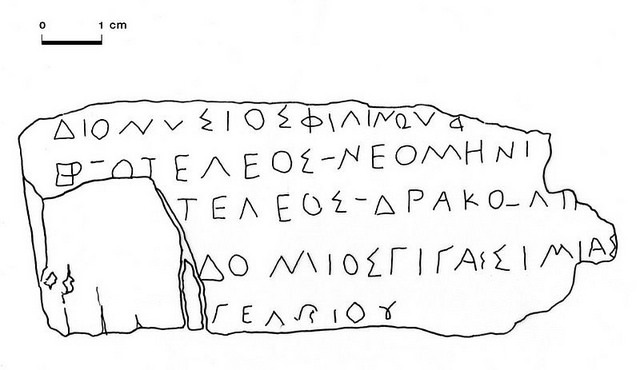 Drawing of a katadesmos from Kamarina. Drawing by D. Weiss
Drawing of a katadesmos from Kamarina. Drawing by D. Weiss
__________________________________________
Literary evidence suggests that seashells were also used as katadesmoi. For instance, a passage from the Greek Magical Papyri, a Greco-Roman magical text dating to approximately the 2nd century BCE to the 5th century CE, instructs petitioners to write their messages on seashells in a specific type of ink. Then, when the moon stands in opposition to the sun, the petitioner’s shell should be buried in the tomb of someone who died untimely. If these conditions are met, the deceased will carry the shell to the Underworld and deliver it to its designated recipient. Since the binding spells were presumably written in ink and not inscribed on the surface of the shell, there are no extant examples of seashells with magical inscriptions. Although it is unknown whether they served a magical purpose, three seashells were recovered from Passo Marinaro graves.
What Does it all Mean?
Magic was a critical tool in the ancient Greek world, because it was believed that magic allowed the practitioner to proactively manipulate situations that were beyond his or her control. In essence, magic gave power to the powerless. Necrophobic reactions, such as trapping corpses in their graves, and the use of katadesmoi are two examples of magical solutions to weighty life problems—and these problems were indeed serious, for who could stand idly by as their family members die from tuberculosis, and who has not felt the grievous pain of unrequited love? Although our modern sensibilities might perceive corpse-manipulation and curse tablets as extreme responses, we are equipped with additional information and alternative solutions that were not available to the ancient Greeks. For instance, advances in science can assure us that our loved ones will never return from the dead and we have the luxury of being able to choose from a plethora of self-help books or mental health professionals to empower us to work through sticky personal problems and frustrating business situations. Yet, without these modern conveniences, the ancient Greeks both comprehended and confronted their problems within the confines of their abilities. As a result, as classicist Sarah Iles Johnston aptly points out, the ‘special’ dead often served as scapegoats and were assigned blame for a number of inexplicable natural phenomena, from the spread of disease to destructive weather fronts.
Evidence from the Passo Marinaro necropolis, though limited, demonstrates the concomitant desires to both suppress and invoke the special dead. Although these acts appear to be contradictory, together they provide a powerful testimony to the ways in which the ancient Greeks conceptualized the dead. In particular, death had little impact on the essential features of human personality. If an individual was dangerous in life, he continued to be dangerous after death. Furthermore, the dead retained their ability to emote, and were assumed to feel the same about good or bad treatment after death as they would have when they were alive. The unfortunate special dead were predisposed to feel unhappy or vindictive, which directly affected the living because these individuals could reanimate on their own accord, or be easily manipulated into serving the nefarious desires of others. The living were therefore ever mindful of the possibility that even after death, the dead could once again rise to help or haunt, depending on one’s fears or desires. As a result, the care and propitiation of the dead was a civic, rather than a personal, concern because the negligence or provocation of the restless dead held the potential to threaten the entire community. Thus, the macabre archaeological findings from Kamarina not only provide additional material evidence for necrophobia and necromancy in the Greek world, but also shed light on a rare, but interesting, aspect of Greek mortuary practices.
____________________________________________________
This research will be published in the author’s forthcoming book The Bioarchaeology of Classical Kamarina: Life and Death in Greek Sicily (University Press of Florida, August 2015). Funding was provided by The Etruscan Foundation, the McIntire Department of Art (University of Virginia) and the Kenneth P. Dietrich School of Arts and Sciences (University of Pittsburgh). Special thanks are owed to G. Di Stefano (Director, Museo regionale di Kamarina), D.K. Rogers (Assistant Director, American School of Classical Studies at Athens), D. Weiss (Director of the Visual Resources Collection, University of Virginia), J. Josten, (Assistant Professor, University of Pittsburgh), J. Ellenbogen (Associate Professor, University of Pittsburgh), A. Tsaliki and R.J.A. Wilson (Professor Emeritus, University of British Columbia).
Pertinent Links:
Regional Museum of Kamarina
The Etruscan Foundation
http://etruscanfoundation.com/
McIntire Department of Art, University of Virginia
Department of History of Art and Architecture, University of Pittsburgh
Subscribe to Popular Archaeology Premium. Available on all laptops and mobile devices, and still the industry’s best value at only $9.00 annually.
___________________________________________
Travel and learn with Far Horizons.
____________________________________________
This richly illustrated issue includes the following stories: Recent findings shedding new light on the whereabouts of the remains of Philip of Macedon, father of Alexander the Great; how an archaeologist-sculptor is bringing bones of the dead back to life; archaeologists uncovering town life at the dawn of civilization; an exclusive interview with internationally acclaimed archaeologist James M. Adovasio about what makes the Meadowcroft Rockshelter prominent in the ongoing search for the first Americans; what archaeologists are finding at the site of the ancient city of Gath, the home town of the biblical Philistine giant, Goliath; and how scientists are redrawing the picture of human evolution in Europe. Find it on Amazon.com.

